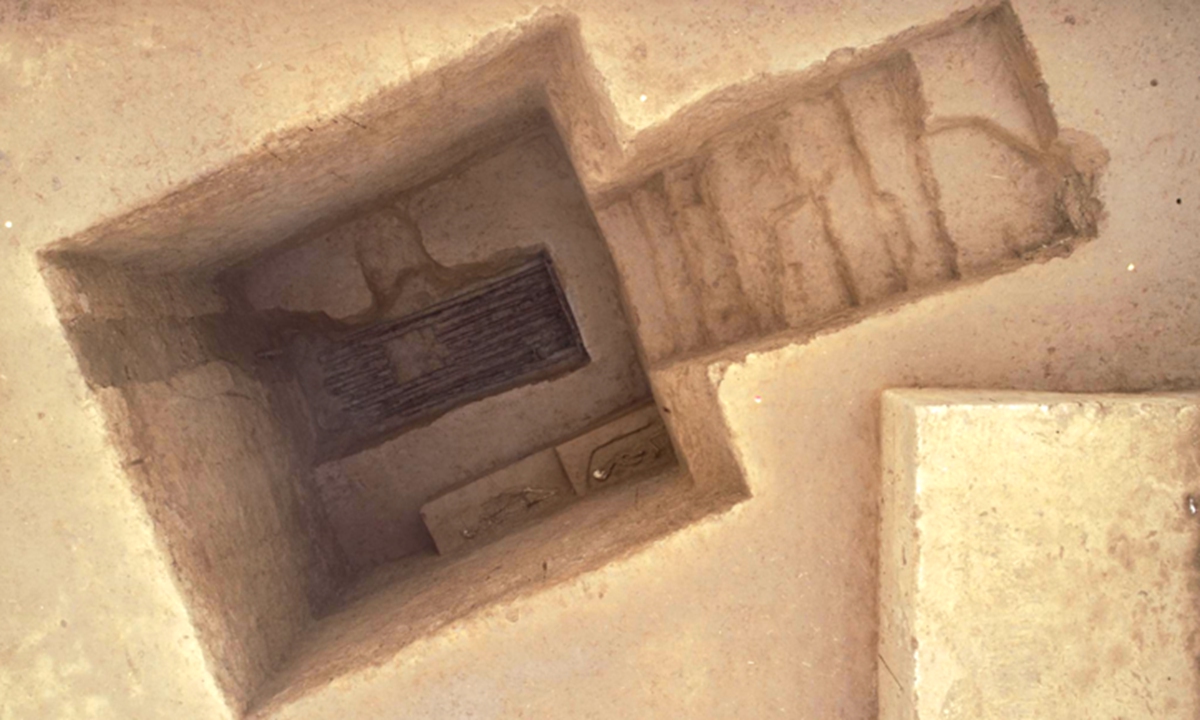
A tomb discovered in the Zhoujiazhuang site in North China's Hebei Province Photo: Courtesy of National Cultural Heritage Administration
New findings from the Ming Dynasty (1368-1644) tombs of Prince Jin Duan and his wife were unveiled by Shanxi Provincial Institute of Archaeology on Thursday.
A recent excavation unearthed burial objects such as pottery, jade artifacts, silk garments, and lacquered wooden coffins, providing new evidence for studying the funerary attire, burial customs, and history of Jin princes during the Ming Dynasty.
Since May 2019, the Shanxi Provincial Institute of Archaeology and the Taiyuan Institute of Cultural Relics and Archaeology have been conducting excavations. Three large tombs in a layout shaped like the Chinese character jia (甲) have been discovered.
Based on the unearthed tomb inscriptions, it was confirmed that the tombs were for Prince Jin Duan and his concubines Lady Yin (M2) and Lady Wang (M1), and his wife Yuan (M3).
During the excavation process, archaeologists also conducted surveys of the surroundings, discovering the remains of the mausoleum wall and related architectural relics.
Despite having been looted, the three tombs, located in the central part of the mausoleum complex, yielded a large quantity of pottery, porcelain, jade, gold and silver ornaments, as well as tomb inscriptions, epitaphs, and a considerable number of textiles and lacquered wooden objects.
According to Zhao Hui, head of the archaeological excavation project, in the third year of the Hongwu era (1370) of the Ming Dynasty, then emperor Zhu Yuanzhang appointed his third son Zhu Gang as Prince Jin.
The three tombs discovered in the tomb complex of Prince Jin Duan provide important materials for studying the burial system of Jin princes.
Zhao explained that all three tombs discovered in the tomb area of Prince Jin Duan have a three-room structure. None of the tombs have ante-chambers, indicating that at least from the time of Prince Jin Duan, ear chambers were no longer included in the construction of princes' tombs, possibly due to the gradual decline in the political influence of the princes.
Global Times
URL: https://www.seeglobalnews.com/read-3220.html